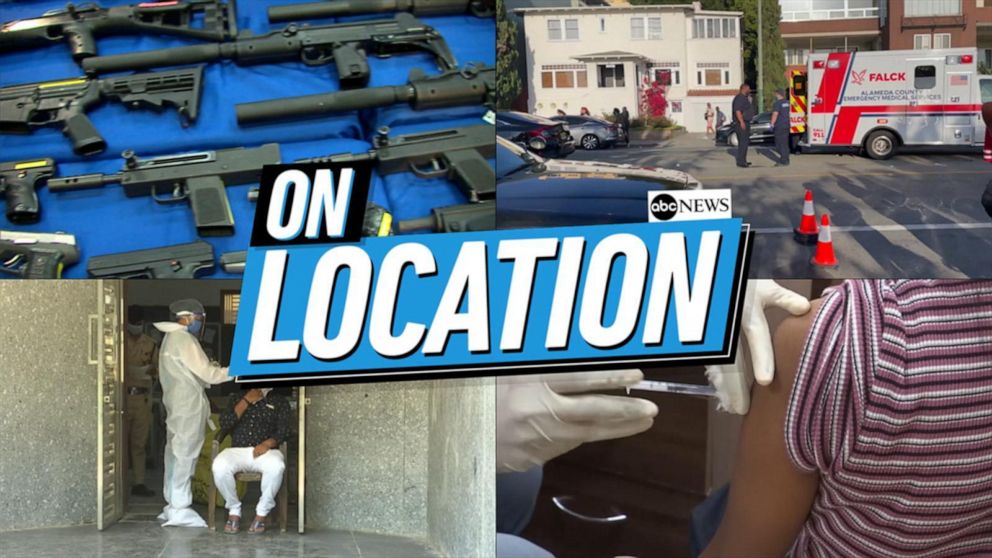
TEHRAN, Iran -- Iranian authorities have thwarted what they called a “sabotage attack” targeting a civilian nuclear facility near the country's capital, state TV reported Wednesday, as details about the incident remained scarce.
The attempted attack against a building belonging to Iran's Atomic Energy Organization “left no casualties or damages and was unable to disrupt the Iranian nuclear program,” Iranian state television reported, adding that authorities were working to identify the perpetrators.
Iranian media offered no details on the kind of attack, saying only that the move targeted a sprawling nuclear center located in Karaj city, just some 40 kilometers (25 miles) northwest of Tehran.
When asked for comment, an Iranian official referred to the initial report by Nournews, believed to be close to Iran's Supreme National Security Council. The official spoke on condition of anonymity as they did not have authorization to discuss the matter with media.
The International Atomic Energy Agency, the United Nations’ body that monitors Tehran’s atomic program, did not immediately respond to request for comment.
Iranian authorities did not specify which facility in Karaj had been targeted. There are two sites associated with Iran's nuclear program known to be in the area, including the Karaj Agricultural and Medical Research Center.
Iran’s Atomic Energy Organization describes the Karaj Agricultural and Medical Research Center as a facility founded in 1974 that uses nuclear technology to improve “quality of soil, water, agricultural and livestock production.”
Earlier on Wednesday, Iranian social media crackled with unconfirmed reports that authorities had prevented an unmanned aerial vehicle from targeting a COVID-19 vaccine production facility. But an anonymous official in the country's air defense units later ruled out that theory, telling Iran’s semi-official ISNA news agency that it was “not a drone attack, but rather possible sabotage targeting security that doesn't fall within the authority of our air defense system.” The official did not elaborate.
There are 18 nuclear facilities and nine other locations in Iran under IAEA safeguards. The agricultural nuclear research center is not listed as a “safeguard facility” with the IAEA, though a nearby nuclear waste facility around Karaj is. The IAEA visited the site in 2003.
The Karaj facility had “been storing waste from the nuclear program and equipment dismantled from atomic vapor laser isotope separation experiments in the nearby Lashkar Abad,” according to a policy paper by the Washington Institute for Near-East Policy written in March 2015.
The U.N. Security Council in 2007 sanctioned the Agricultural Center, identifying it along with other facilities it described as being involved in Iran’s nuclear and ballistic missile programs. The U.S. Treasury under then-President George W. Bush also sanctioned the facility.
The U.S. lifted those sanctions under the 2015 nuclear deal, although re-imposed them in 2018 with then-President Donald Trump’s decision to unilaterally withdraw from the accord.
The foiled sabotage attack follows several suspected incidents targeting Iran’s nuclear program that have heightened regional tensions in recent months, as diplomatic efforts gain traction in Vienna to resurrect Tehran's tattered atomic deal with world powers.
In April, Iran’s underground Natanz nuclear facility experienced a mysterious blackout that damaged some of its centrifuges. Last July, unexplained fires struck the advanced centrifuge assembly plant at Natanz, which authorities later described as sabotage. Iran now is rebuilding that facility deep inside a nearby mountain.
Israel is widely believed to have carried out the sabotage, though it has not claimed it. Iran also blamed Israel for the November killing of a scientist who began the country’s military nuclear program decades earlier.
Trump’s decision to withdraw from the nuclear deal has seen Iran, over time, abandon all limitations on uranium enrichment. The country is now enriching uranium to 60%, its highest ever levels, although still short of weapons grade. Iran has said that its nuclear ambitions are peaceful and that it will return to its commitments once the U.S. lifts its sanctions.
Last December, Iran’s hard-line parliament approved a bill that would suspend part of U.N. inspections of its nuclear facilities if European signatories didn’t provide relief from oil and banking sanctions by February.
The IAEA then struck a temporary deal with Iran to have it salvage the surveillance images, with Tehran threatening to delete them afterward if sanctions remained in place. Iran will decide whether to extend that deal after its expiry on Thursday, presidential chief of staff Mahmoud Vaezi was quoted as saying by Iran's state TV.
Earlier this week, Iran's sole nuclear power plant at Bushehr underwent an unexplained temporary emergency shutdown. Authorities earlier this year had warned of the plant's possible closure because of American sanctions that allegedly prevented Iran from procuring equipment for repairs.
On Tuesday, the IAEA said it was informed of a technical program striking the Bushehr plant's electrical generator. The agency said the facility would go back online after being reconnected to the national electric grid.
Iran’s nuclear department said that engineers were working to repair the broken generator.
———
DeBre reported from Dubai, United Arab Emirates. Associated Press writer Jon Gambrell in Dubai contributed to this report.
"center" - Google News
June 23, 2021 at 10:33PM
https://ift.tt/3vUq9TH
Iran: 'Sabotage attack' on civilian nuclear center thwarted - ABC News
"center" - Google News
https://ift.tt/3bUHym8
https://ift.tt/2zR6ugj
Bagikan Berita Ini














0 Response to "Iran: 'Sabotage attack' on civilian nuclear center thwarted - ABC News"
Post a Comment